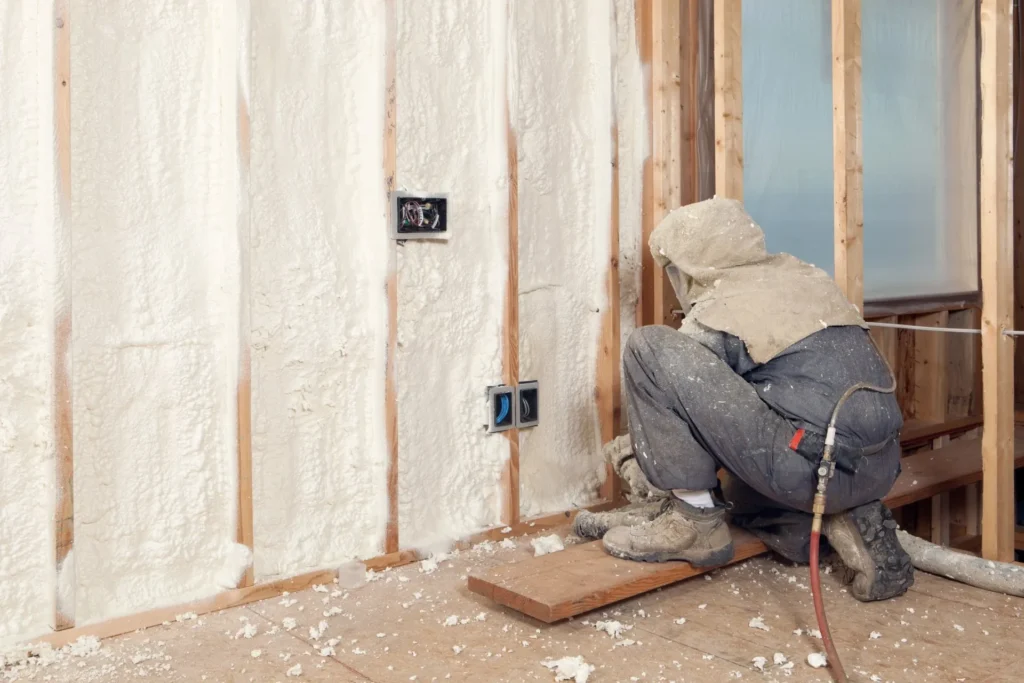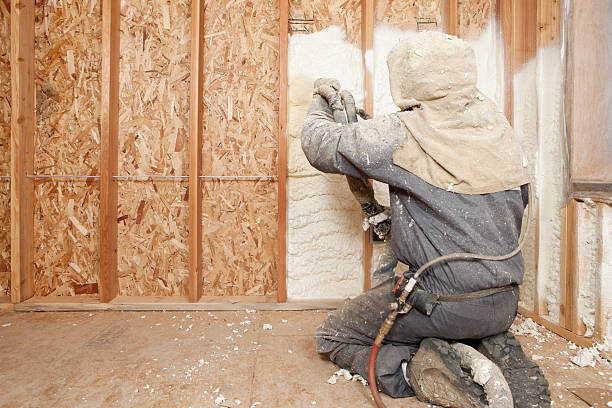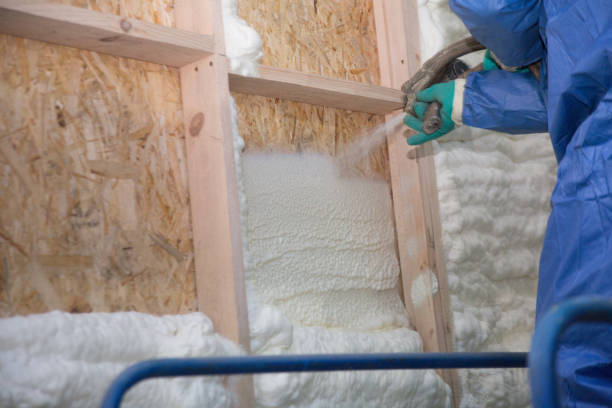
A typical spray foam insulated house outperforms a typical fiberglass batt insulated house. There is no question that statement is true; however, there are many instances and posts on the internet which warn consumers to avoid using spray foam. Typically, those issues fall into four categories:
1. Spray foam isn’t thick enough.
2. Spray foam installers missed some of the air leakage sites.
3. Spray foam installers didn’t understand the building envelope and sprayed either too little or too much.
4. Spray foam contracts and pulls away from framing.
Let’s cover these in more depth…
Spray foam isn’t thick enough.
This is more common with closed cell foam, but it happens with open cell foam, too. Since closed cell foam has a higher R-value per inch, installers generally spray 2″ in walls and 3″ in rooflines to meet the energy code requirements of R-13 and R-19, respectively. Open cell foam usually fills the framing cavity completely, so it’s easy to tell if the installer has sprayed enough. Closed cell foam doesn’t fill the cavity, so you’ve got to spot check in a bunch of places to make sure you don’t get shorted. In a properly insulated spray foam attic, the temperature won’t be much higher than the house temperature. If the attic is hot, there is a problem with the foam application. The issue is that the installer was not spraying the foam uniformly, and the thickness of the insulation varied from zero (visible roof deck) to more than the prescribed depth. Unfortunately, good average thickness doesn’t cut it. The coverage needs to be uniform because a lot of heat will go through the under-insulated areas.
Spray foam installers missed some of the air leakage sites.
It’s important to seal the attic envelope completely. One of spray foam’s biggest selling points is its air-sealing ability, but it can’t seal places where it’s not sprayed. Often the installer is rushing through the job and misses small areas that will cause problems over time. One of the nice things about using spray foam is you can do a Blower Door test to check for air that is entering or escaping from your home. If you find your attic is too hot after spray foaming, you should consider calling the installer back to inspect the foam or have a blower door test done.
Spray foam installers didn’t understand the building envelope and sprayed either too little or too much
Many older homes in Florida are bungalow or ranch-style construction where the attic area is a simple rectangle. In more complex houses, seeing exactly where the building enclosure is can be a challenge. If the installer misses areas, it may or may not be an air leak, but it will definitely be a thermal bypass because of the lack of insulation. Every part of the building enclosure must be insulated, or the home will have excess heat loss/gain.
Spray foam contracts and pulls away from framing.
Although more common when closed cell foam is applied, this issue can happen with open cell foam. Contraction could result from a bad batch of chemicals, improper mixing, or too high a temperature during the install. Whatever the cause, it’s not a good thing. A little bit of uninsulated area can add up to a lot of wasted energy when the whole house has this problem.
The Solution
Although no one is infallible, our sprayers have been trained, have years of experience, and are constantly encouraged to take their time preparing and applying the foam. The important thing to know is that we stand by our work with a one year labor guarantee. If, in the unlikely event, you find your attic is still too hot, your HVAC system is still working too hard, or you can see issues with the foam, we will send a crew to remedy the issue.
Credit: https://www.energyvanguard.com/blog/4-pitfalls-of-spray-foam-insulation/



